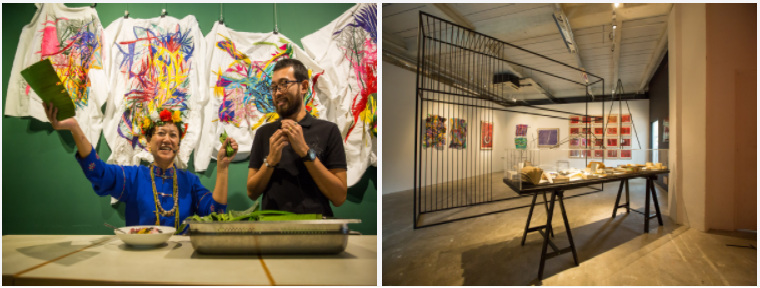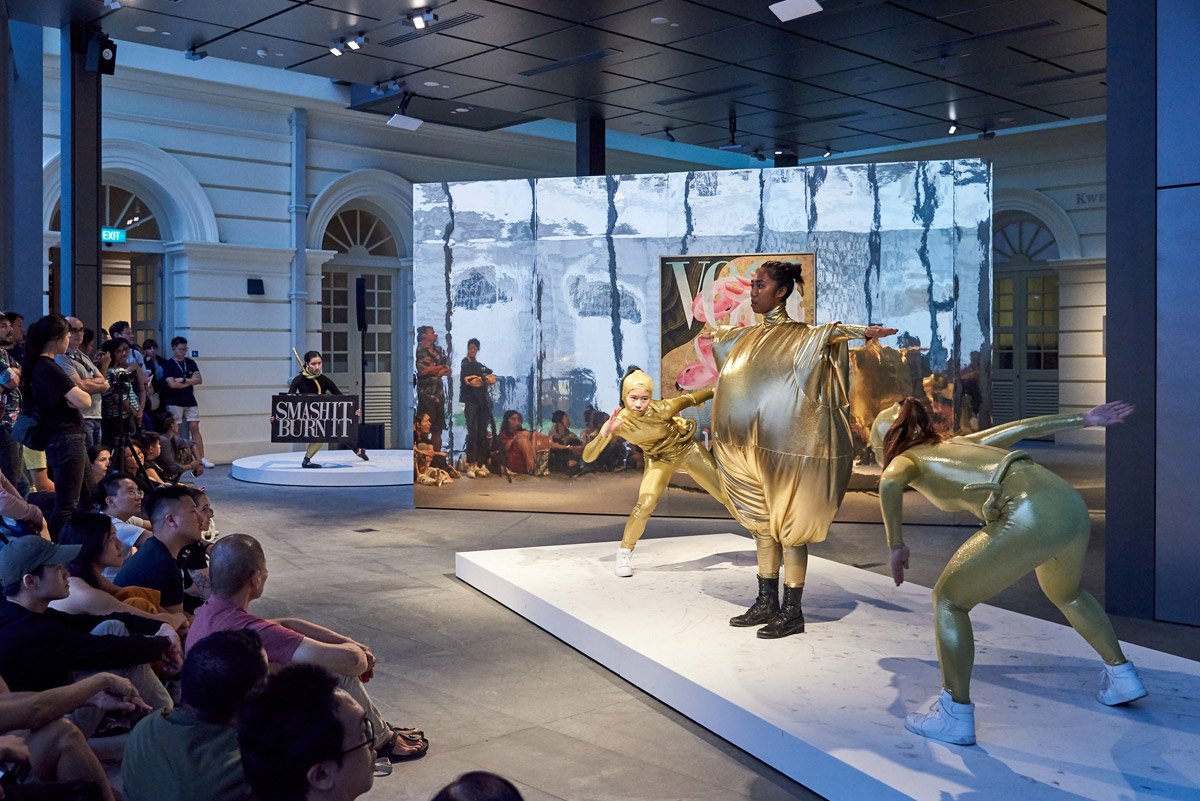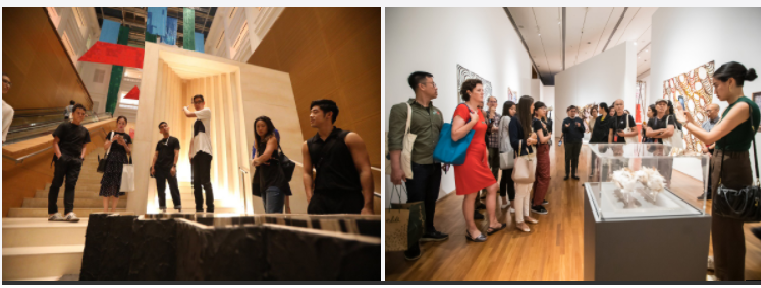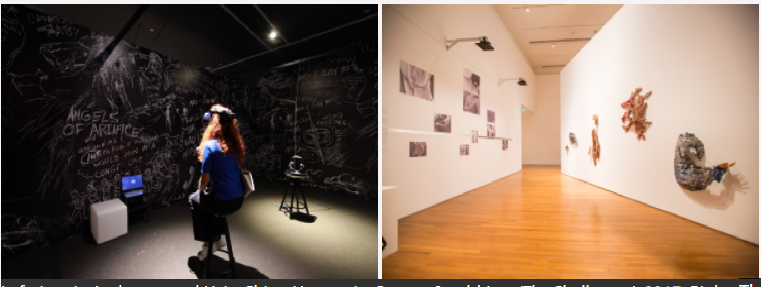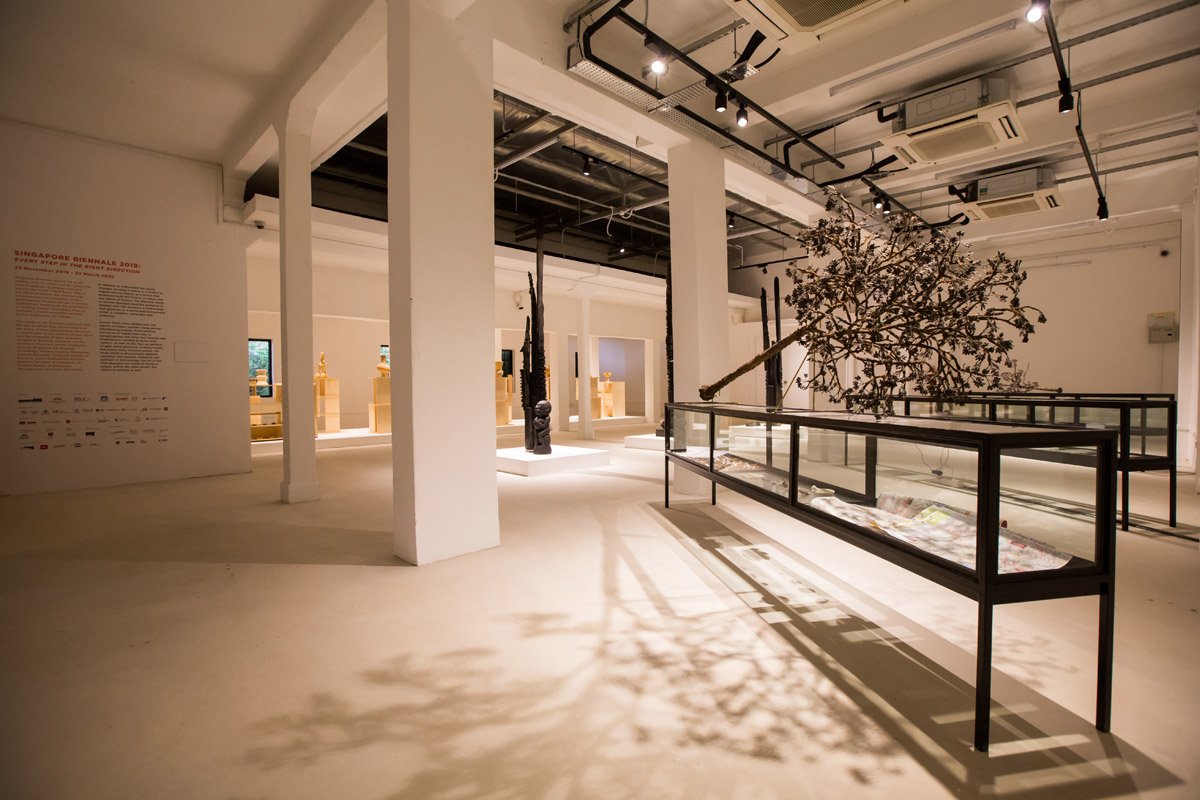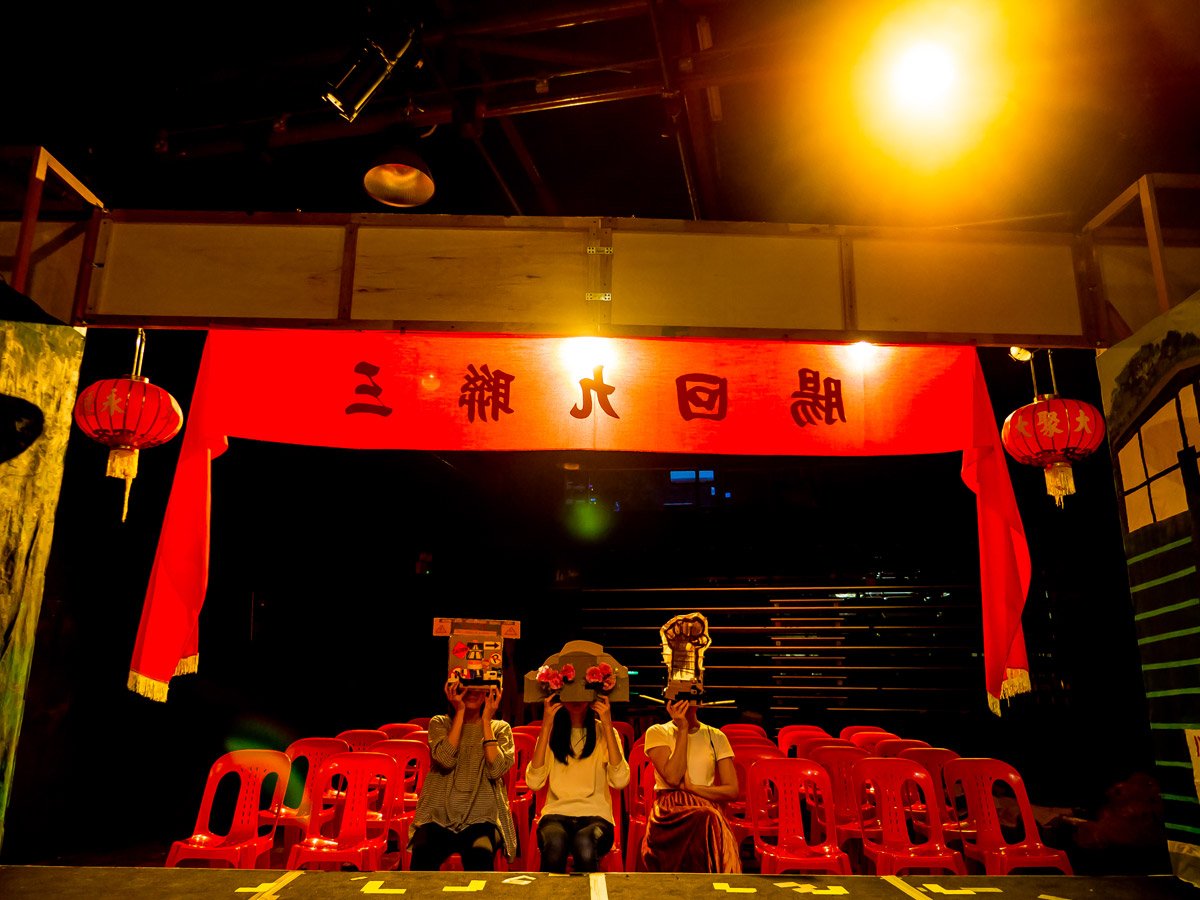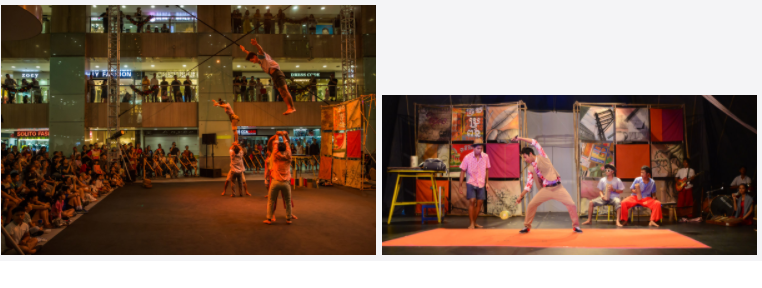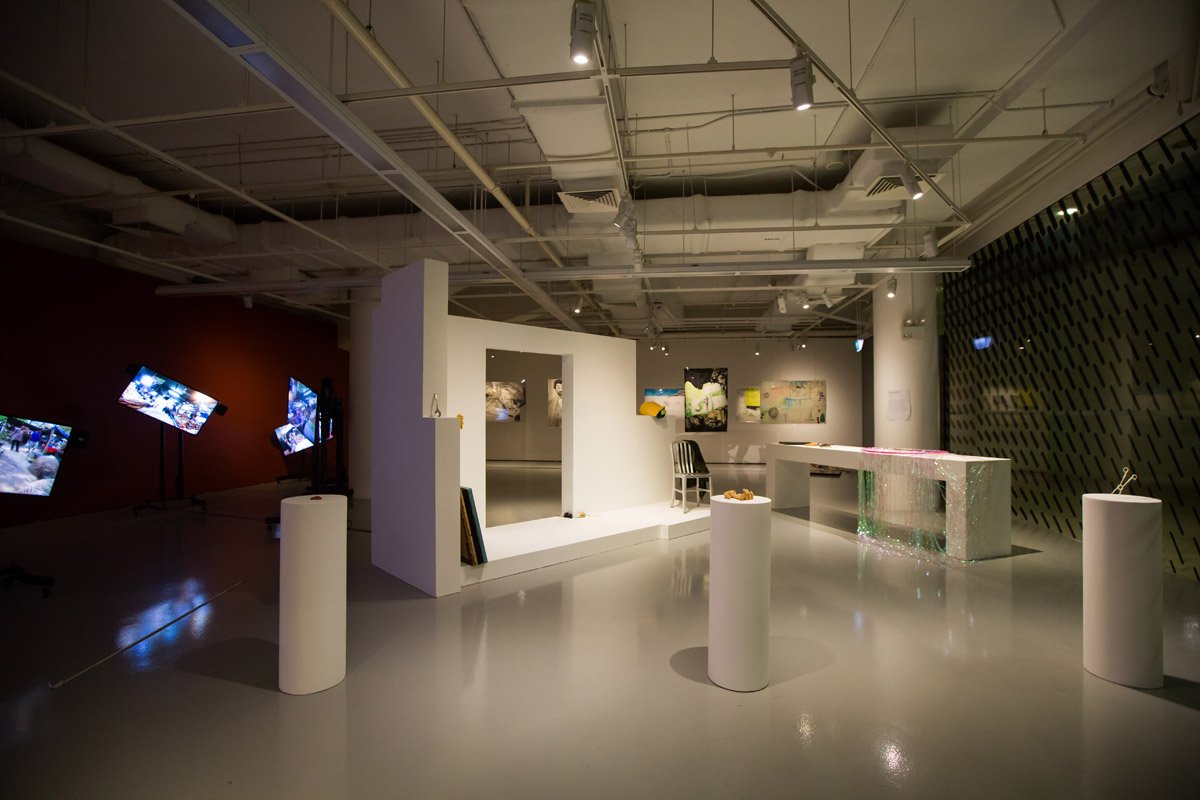“Time to Unlearn”: Urgency and Practical Intelligence in the Southeast Asian Museum
by Patrick D. Flores
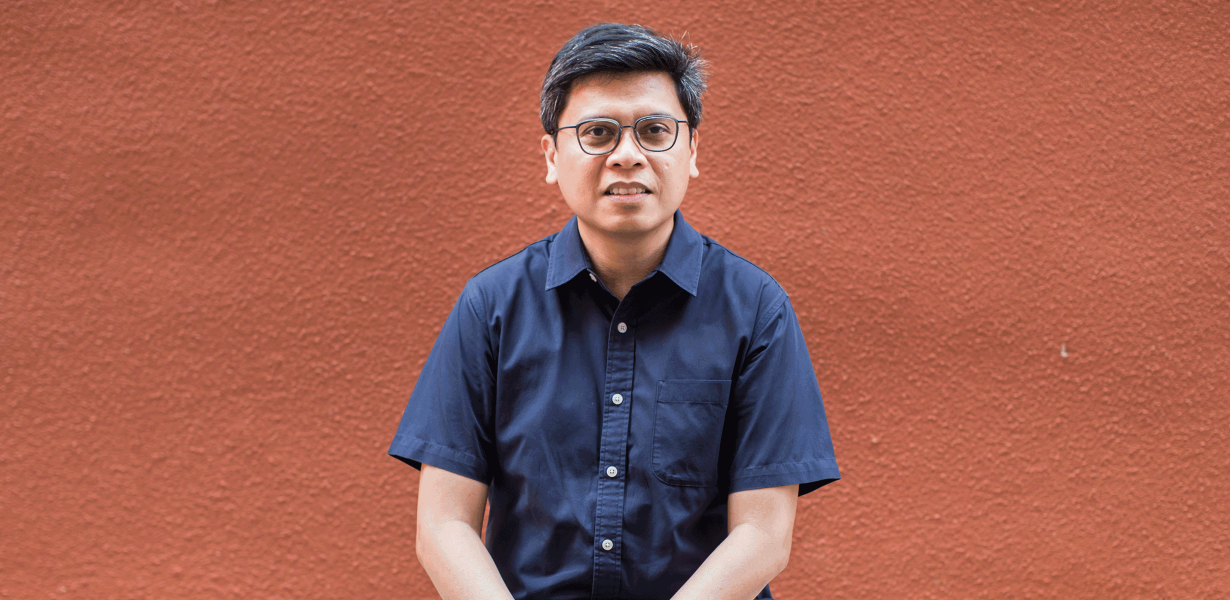
Introduction:
I presented this paper as one of the keynote lectures in 2017 at the CIMAM conference in Singapore. The said assembly was prompted by the concern around the role and the responsibility of museums in civil society. The anxiety over the relationship of the museum with a broadly conceived body politic within a critically formulated socius has always shaped the program of a museum, or any related affective apparatus, sensitive to the demands of its public and in the same vein open to enlist that public in difficult conversations on subjectivity and the political work of deliberation. This situation may well offer up a foil to the public sphere routinely instrumentalized by interests like the market or ideology.
It is interesting to note that a year after this keynote, I was appointed to serve as Artistic Director of the Singapore Biennale of 2019. In my 2017 presentation, I tried to propose a modality of unlearning in the Southeast Asian museum through the work of four figures who would lay bare the limits and contingencies of institutionality and, within or through it, create certain conditions of productive practice, one that was not necessarily beholden to the dialectical tradition of negative critique, or to the affirmative politics of the co-production of global modernities. This was both an art-historiographic and museologic gesture, responding to the exigency to write a history of exhibitions through the curatorial agency and the analysis of museums through the economy of complicity.
I pursued this line of reflection in the Singapore Biennale 2019 through three approaches: the procedure through “roots, basics, beginnings” foregrounded by the artist-curator-thinker Raymundo Albano; the political premise of “every step in the right direction” by the anti-American revolutionary Salud Algabre; and the curatorial aesthetic of the festival-seminar, a cross between Albano and Beuys, in which urgency and thoughtfulness would congeal. All this inflected the pervading schema of the ethical and the geopoetic, a way to speak to an inter-species world that requires fundamental transformation with patience, and the instinct for that vital step in the reworking of the world.
The desire of the 2019 edition of the Singapore Biennale was to enhance the capacity of its location, which was Singapore in the context of Southeast Asia, to produce a setting for contemporary art and to convey the energy of this environment to a wider creative atmosphere across the world. The biennial is a productive platform to concretize this desire because it lies at the intersection of the art world, the public sphere, academic production, popular culture, and social movements. Biennials today struggle with the condition of the world and the condition through which the world is expressed in art. It seeks to engage a wider audience beyond the art world and involves practitioners from a range of disciplines. Beyond the excitement, however, biennials also struggle with fatigue and repetition.
Much of what we know about modern Southeast Asia has been constructed by colonialism, wars, revolutions, and the geopolitics of the Cold War. Beyond this axis, Southeast Asia could actually cover a larger territory. This limited geopolitical construction would be further amplified in projects of nationalism and regionalism across the twentieth century. Southeast Asia is linked to the civilizational discourses of China and India, Catholicism and Islam (home to the only Catholic nation in Asia, the Philippines, and the world’s largest Islamic population, Indonesia); it experiences intense economic activity (if seen as a region, it is the sixth largest economy in the world) and dense natural history that is close to the level of the Amazon. In other words, there is exceptional difference underlying the region, thus this concept of regionality needs to be thought through delicately and not merely repeated as a given order of things.
As Artistic Director, I imagined the Biennale to reach out to a wider public sphere. At the same time, I imagined that public to also ask questions about its interlocution of the Biennale platform. This is why I insinuated an intersection between a festival and a seminar, a common ground in which contemporary art can belong to a more open sensible life, on the one hand, and to a moment of a more critical appreciation of the experience of art, on the other.
The 2019 Singapore Biennale moved away from the thematization of its material. It refused and did not encourage the question: What is the biennale about? The biennale is not about something; it instead performs a proposition and does not instrumentalize the art to become mere functions or illustrations of the theme. To carry this out, I was guided by a method that allowed me to concretize the geopoetic and the ethical gesture of art: to evoke the place of Southeast Asia and beyond as a generator of contemporary art and to present works from this place as a way to remap the world as a project of reconstruction, a kind of making right what, for instance, colonialism and globalization have distorted or denied. This method took me to two phrases: one is a title of the exhibition in Manila in the 1970s and the other the title of Singapore Biennale 2019.
The first phrase is: roots, basics, beginnings. It is taken from an exhibition by the artist-curator Raymundo Albano. The idea of Roots, Basics, Beginnings proceeds from the effort of Albano in the late seventies to explain what is happening in a contemporary work of art, or a work of contemporary art, and why it is in the world. It was a way for Albano, who was then curating the visual art spaces at the Cultural Center of the Philippines to introduce a general public to the various forms of contemporary art or the art of the present time in a world that in Albano’s words was “suddenly turning visible.” He organized an exhibition of the same title around this idea and focused on three categories of possibility for the work of contemporary art; and these are roots, basics, beginnings.
Now the second phrase, which is the title of the Biennale. The 2019 Singapore Biennale is titled “Every Step in the Right Direction.” The line came from Salud Algabre, a Filipino woman, a militant seamstress, involved in the peasant movement in the 1930s in the Philippines. The political action that this movement waged was perceived to have failed. When a scholar years later hinted at this failure in an interview with Algabre, she would rectify the impression by saying that, “No uprising fails. Each one is a step in the right direction.” For me, this signifies a movement that is successive and sustained but not necessarily progressive and one requiring rupture as in the avant-garde contemplation.
To perform this ethical agency, the Biennale worked with the Singaporean artist Amanda Heng. For her project in this year’s Biennale, Heng returned to the scene of the walk and to think through “the assumption of the body as the fixated object/subject in live art practice, and the reality of the aging body in the face of its own growth, and the impact of rapid changes of the external world brought about by new technology, information, challenges and values. The focus is shifted from the physical body to the inner sources and the spiritual dimension and intangibles, the ethical, values, beliefs and to rediscover the natural instinct for resistance, healing, survival and renewal.”[1]
As the director of the Biennale, I wished to explore the ability of a method to shape the Biennale and to resist the temptation to merely thematize the spectacle of contemporary art. Such a method introduces this double, but not binary, movement between the ethical and the geopoetic. The Biennale became an opportunity to remember and honor the struggle and the joy of Salud Algabre and Amanda Heng who had come from different historical climates and cultural genealogies, brought together in the event in Singapore as contemporaries, as they intuited a feminist poetics and politics that would hopefully enliven the imagination of what it means to be political in the bodily decision to do what is right in our everyday waking and walking life.
This ecology of relations, is, to quote Elizabeth Povinelli, “neither a part nor a whole but a series of entangled intensities […] Once the multiplicity of entities are oriented to each other as a set of entangled substances […] this sense of entanglement exerts a localizing force.”[2] And speaking of ecology, apart from the exhibitionary program of the Biennale, the Coordinates Projects ran parallel. It was a suite of initiations from the ground in Singapore and elsewhere that I did not want to conveniently assimilate into a biennial framework. I wanted their organicity and idiosyncrasy to calibrate the biennial form so that I could ultimately acknowledge the cultural work done by peers and colleagues in spite of the Biennale. I chose organizations focused on heritage; moving image; and performance to supplement what the Biennale had lacked: a long-term and robust interaction with the locality and the audience, which is not necessarily affixed to the art world, that has been formed over time. Liaising with two theater groups of Brechtian and Asian disposition, a cinematheque, a Eurasian library, an Indian heritage museum, and a tour group based in the red-light district of Singapore was immensely instructive.
And this is where we are at: the possible localizing force of the biennial through the steps taken within the intimate realms of the self and the worldly geopoetic terrains of an exuding ecology. As the art and the audience of the biennial resolve to take these ethical steps, the “dynamics of towardness” begins, in the words of Ranajit Guha, with “its characteristic movements of inclining, approaching, and approximating […] in a lateral solidarity.”[3] Edgewise, or from side to side, and in a transversal way, the steps verge on each other in the right direction.
I wish to say at the outset that this conference is right to reclaim a sense of the common ground of responsibility. Because we are made to confront responsibility, the common ground is necessarily intersubjective and therefore difficult to inhabit because it is exceptionally social. Whether we regard this ground as the public sphere or the civil society, what is raised in high relief is the desire for collective thoughtfulness. This desire entails a process of persistent persuasion that prepares those who take part not only to be different or differentiated, but more importantly to be patiently deliberative and daringly comparative, to be strongly poised to unsettle the security of the self. In light of this prospect, I thought what could be a better place to begin this reflection on the mediation of the museum, and therefore, of the modern identity of the reflexive self than the nineteenth-century classroom in the Southeast Asian colony. It is a classroom that morphs into a museum, or what its precursor might resemble, in the form of the cabinet or vitrine that contains the equipment of science. The Philippine polymath patriot Jose Rizal, who later would become the National Hero, writes in the 1891 novel El Filibusterismo, translated as The Reign of Greed by Charles Derbyshire, a chapter titled “The Class in Physics.” Rizal first describes the nearly clinical classroom and then zeroes in on an intervening substance of both enigma and disdain that reveals and obscures, excludes and invites, under the auspices of the curate-curator who presides over this precinct of learning. The school is the University of Santo Tomas, which began to be formed in 1605 and became a university in 1645. According to Rizal:
The walls, painted white and covered with glazed tiles to prevent scratches, were entirely bare, having neither a drawing nor a picture, nor even an outline of any physical apparatus. The students had no need of any, no one missed the practical instruction in an extremely experimental science; for years and years it has been so taught and the country has not been upset, but continues just as ever. Now and then some little instrument descended from heaven and was exhibited to the class from a distance, like the monstrance to the prostrate worshipers—look, but touch not! From time to time, when some complacent professor appeared, one day in the year was set aside for visiting the mysterious laboratory and gazing from without at the puzzling apparatus arranged in glass cases. No one could complain, for on that day there were to be seen quantities of brass and glassware, tubes, disks, wheels, bells, and the like—the exhibition did not get beyond that, and the country was not upset.
Besides, the students were convinced that those instruments had not been purchased for them—the friars would be fools! The laboratory was intended to be shown to the visitors and the high officials who came from the Peninsula, so that upon seeing it they would nod their heads with satisfaction, while their guide would smile, as if to say, “Eh, you thought you were going to find some backward monks! Well, we’re right up with the times—we have a laboratory!”[4]
This is an exemplary situation of learning, relearning, and unlearning. It can be read as an allegory of regulated seeing and representing, of being in the same place of the device but is distanced from it as if the thing were a religious monstrance and the person, a prostrate secular subject. Rizal here juxtaposes colonial pretensions to a supposedly transparent enlightenment with the opacity of sensory prohibitions and privileges. A key element in this moment is the simultaneously alienating and alluring glass, the modern surface that offers the illusion of transparency and heightens the desire for property. This “vitreous view,” according to the art historian Lihong Liu, becomes a site to analyze both “materiality and mediality”: how the object predisposes the body in space to think of its presence in the world.[5] Lihong Liu meticulously annotates this instance in the context of Chinese art and argues: “Viewers would encounter this paradox with constant decision making and bodily coordination as their embodied eyes move between the enclosure and open space, adjusting their positions between distant looking and close scrutiny.”[6] Such allegory takes on a political layer when it threatens the discourse of enlightenment and demystifies the latter as a discourse of denial, or at least an ambience of temptations and appearances, of merely beholding and not touching and not using. This unnerving proto-museological moment anticipates what we call in our time the “economy of enrichment,” defined by Luc Boltanski and Arnaud Esquerre as “forms of wealth creation that are based on an economic exploitation of the past, in the form of craft, heritage, tradition, identity or, more largely, culture. The idea of enrichment refers to the act of improving the value of something, but we should also understand it in its material connotation, as when we speak of the enrichment of mineral ore.”[7] The economy of enrichment, therefore, takes us to the heart of the nature of the historical, the mystification of culture in the museum, and its valuation as a “collection form.”[8]
I begin with the episode from Jose Rizal’s novel that is tangential to the birth of the Philippine nation because it implicates a range of institutions of the modern, of art, of the museum, of the modern art museum, and the civil sphere of responsibilities. Public instruction in Rizal’s fictional classroom was an achievement of the nineteenth century, and the University of Santo Tomas, the oldest existing University in Asia, mobilized both secular and religious authority that came together in the Catholic and colonial university (fig. 1). An order on secondary education in 1865 prescribed that only the Royal College of St. Thomas Aquinas of the Dominicans and the Ateneo Municipal of the Jesuits could have “a Gabinete de Fisica, a Laboratorio de Quimica with machines and instruments indispensable for good teaching, and a Museo de Historia Natural, in which besides the local products, there must be a classified collection of Zoology and another of Mineralogy.”[9] The rearing of nature and the extraction of earth for industry and their relationship with the priming of culture as the principal medium of subjectivity are implicit here. Jose Rizal attended the said schools and then traveled to Heidelberg to become a physician of the eye.
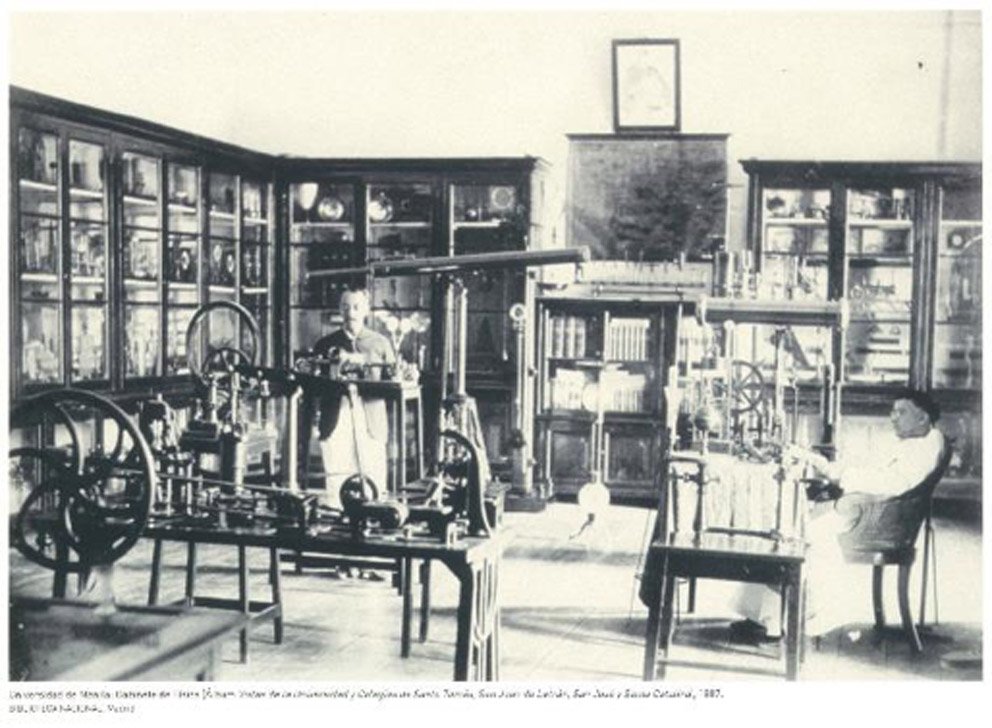
What should be worth exploring finally is that the incident of the student looking at the scientific artifice through the glass leads us to the image and its political theology and not to art and its aesthetic. I think this is a more productive way to initiate the history of art: not to commence with art and the theory of its autonomy, but with image and the ways in which it is animated and alienated at the same time by the mediation of the classroom-museum and its promise of emancipation. After all, as alluded to by Rizal, the Catholic university had the potential of being breeding ground of a post-colonial consciousness that would upset the colonial order.[10] As one bishop had observed: “Every student from Manila who returns to the town of his province is a rebel.”[11] The interrelationship between the critique of colonial pedagogy in the classroom that leads to the ferment of the national and nationalist mind in the student is salient in the argument that the classroom-museum is a laboratory of the history of art, history of nature, history of science, history of industry, and history of nation. By viewing these as modes of extracting and tracing birthrights, of abstraction and human intervention, we can reflect on the nature of the history of art and the modern museum in Southeast Asia as a formation of both material and medium like the glass that is the delicate surface of contact between the gaze and the ideal.
This might have been quite a circuitous way to reach the phrase in the title of this paper. I needed the birth of the museum in the colony to reflect on the gaze and its history and make it co-extensive with the birth of other structures of visibility. For instance, the birth of the clinic, or the teaching hospital in the eighteenth century, in the work of Michel Foucault, refers to the medical gaze. It was a gaze, according to Foucault, that was not “bound by the narrow grid of structure […] but that could and should grasp colors, variations, tiny anomalies, always receptive to the deviant […] it was a gaze that was not content to observe what was self-evident […] it was calculating.”[12] Foucault is led to conclude that “the technical armature of the medical gaze is transformed into advice about prudence, taste, skill: what is required is ‘great sagacity,’ ‘great attention,’ ‘great precision,’ ‘great skill,’ ‘great patience.’”[13] The aesthetic and the scientific, therefore, condensed in the gaze in the classroom and the teaching hospital.
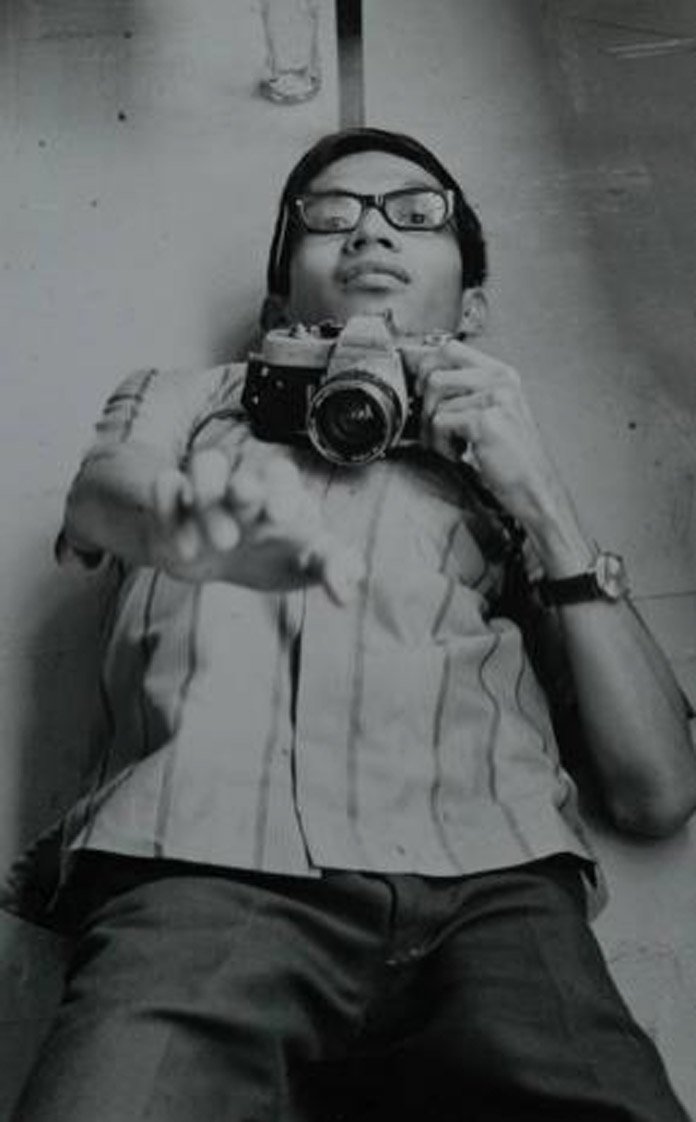
It is only through a reconsideration of seeing that we can propose a process of relearning, as the theme of this session indicates. And as it was place that proved central in the class in physics in nineteenth-century Manila, it is time that is required to relearn the physics of art and culture in the seventies, also in Manila. This brings me to the practice of Raymundo Albano (fig. 2). By 1970, Albano was the director of the museum at the Cultural Center of the Philippines. He looked after borrowed collections of ethnographic materials; programed interdisciplinary spaces; published a serial; and curated a variety of exhibitions. In 1979, he curated A Decade of Developmental Art for which he wrote an essay assessing what he meant by “developmental art”: that is, expression that was experimental and advanced. According to Albano, the museum:
established an image of contemporariness, high [on] risks, low on establishment shows […] It is this image of risk-taking that brought 58,000 paying visitors to the Center last year, and more this year, most of them coming back for the next ‘puzzling’ shows. The apparent interest is in keeping with our motives of providing didactic material—something that tries to involve the intelligence of the artist and the audience, a fine curatorial control, but still leaving some fringes that fascinate our desire for the Beautiful Unknown.[14]
The latter may have taken:
the form of hardly tested materials. Earth, sand, raw wood, and other by-products of nature serve as oils and canvasses. Arrangements and methodologies spring from enlightened polemics. Any which way new ideas receive accusations […] The need to introduce more contemporary ideas is logical as the activities of an art community become more developed. The measure of an institution is its contribution to the development of its concerns. Art, in this sense, is developmental.”[15]
Albano, aside from administering the museum, wrote poetry and criticism, designed theater sets and posters, painted, and made prints. His artistic and curatorial inclinations interpenetrated. In another essay, Albano explicates the historical context of the developmental:
Philippine Art in the seventies went into the crossroads. Art became big business. It promoted all sorts of styles and disciplines. But it bred a new group of artists who were more responsive to the time, meaning, to the social, economic, and [esthetic] requirements of the people. It was a time of questioning roots—a time to once again, as in our government and people, assert the Filipino identity. And so it was a time to unlearn.[16]
I am drawn to the phrase “time to unlearn” because it offers layers and senses of time. Time here could be of the present and therefore of the position of the present. Time could be opportunity, a chance to take action. And time could be an imperative, an urgency: that it is not just a matter of present-ness or position; opportunity or chance, but the ethical response of an agency to a critical condition, or krísis in Ancient Greek that is the root of the modernist critique. Time, therefore, is performative and political. In Albano’s mind, it was timely to question. But it was at the same time untimely, as the gesture of unlearning went against the prevailing pedagogy, against the teaching, or the scripture, of the time. These calibrations between timeliness and untimeliness meant that the curatorial intervention was set within a particular duration, rhythm, and a direction or cycle. It might have been alternating, scalar, serial, and not necessarily emerging from the coveted rupture or radical break of the western avant-garde. A performative, or even a trickster institutionality, enacts this alternating dynamic—successive but not necessarily progressive, reversive but not immediately subversive.
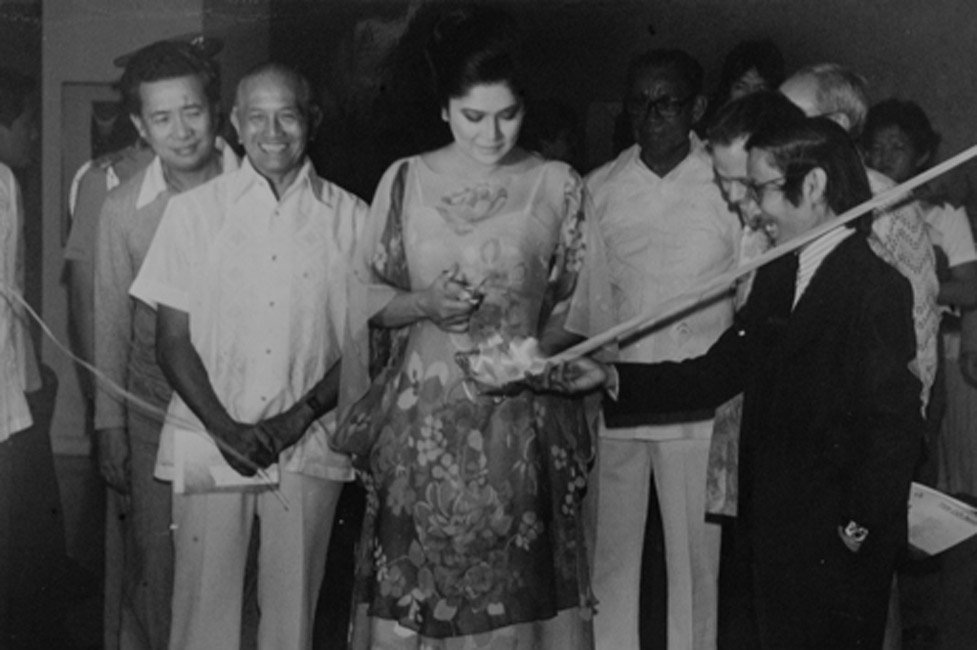
Albano worked at the Cultural Center of the Philippines, opened in 1969, that was envisioned by the First Lady Imelda Marcos as a “Parthenon” built on a “land reclaimed from the past.”[17] The abstractionist and cultural administrator Arturo Luz thought of the Cultural Center as the main node in the network of spaces for art radiating across the country. Luz sketched out a plan for access to what he called “community or neighborhood centers of art.”[18] To overcome the “stigma of elitism,” the design was low-cost, easily constructed, accessible, informal, flexible, and conducive “to active use and participation by the entire community.”[19] Albano found his place in Imelda Marcos’s institution and harnessed his subjectivity to mediate the tension between a Martial Law regime that suppressed the body politic and the desire for experiment that emancipated art from its” artness” or “arthood”. He sharpened his instincts in relation to the incipient unrest of the social and the institution that tried to be as restive as it unsettled the complacencies of art. Do we say then that Albano was torn between these sympathies? I will not use the word “complicit”; instead, I would say he was “co-implicated”. In Albano’s program, three aspects interspersed: the artists and their community; the audience; and the museum. In his mind, the presentation of contemporary ideas should transpire in the context of a “learning public.”[20] While the public was imagined to be in a state of learning, the art was thought to be in a condition of unlearning.
Moreover, the developmental might best be performed by the reclamation itself of land from the sea and the production of space for the arts, cultural events, and international conventions on the waterfront as it had happened in Phnom Penh in the sixties and is progressing in Hong Kong and Abu Dhabi as we speak. The Cultural Center of the Philippines was part of a massive reclamation project that also saw the relocation of slums in the area so that an international metropolis could rise. Here, the modernity of development intersected with the nature of artistic experiment and the ideology of beauty embodied by a prominent political patron. The way Imelda Marcos projected herself as an incarnation of mythological beauty absorbed in the sign system of Philippine national identity cohered with the internationalist brutalism that her favored architectural style flaunted (fig. 3). Both the sculptural Imelda and brutalist architecture, while surely modes of artifice, appeared natural. In fact, Leandro Locsin, architect of the Cultural Center, was remembered by his son as saying that “reinforced concrete is our country’s ‘natural material’ because of its ample supply, economy, durability, beauty, and the skill that the Filipino craftsman inherently possesses to render it artistically.”[21]
Albano appropriated the term “developmental” from the government, a term for activities “that had the nature of being under fast-action plans. The building of roads[,] population control or the establishment of security units for instance, have to be done quickly, within a period of days.”[22] According to Albano: “The implication of a fast-action learning method is similar to that of developmental art” by way of “stimulating public minds and the same time allowing the artists to question and investigate with their work. […] It made one relatively aware of an environment suddenly turning visible.”[23]
In trying to speak to this session’s intentions to relearn Southeast Asia, the region that must be simultaneously reconceptualized with the modernity of the modern art institution, I would like to constellate Albano with three other figures who had been engaged with the thinking through and making of institutions, discourses, and relations. These figures express and work on the anxiety to release the local from its nativism; invest it with distinction; and dispose it to possess equivalent integrity. They translate worldliness in different registers.
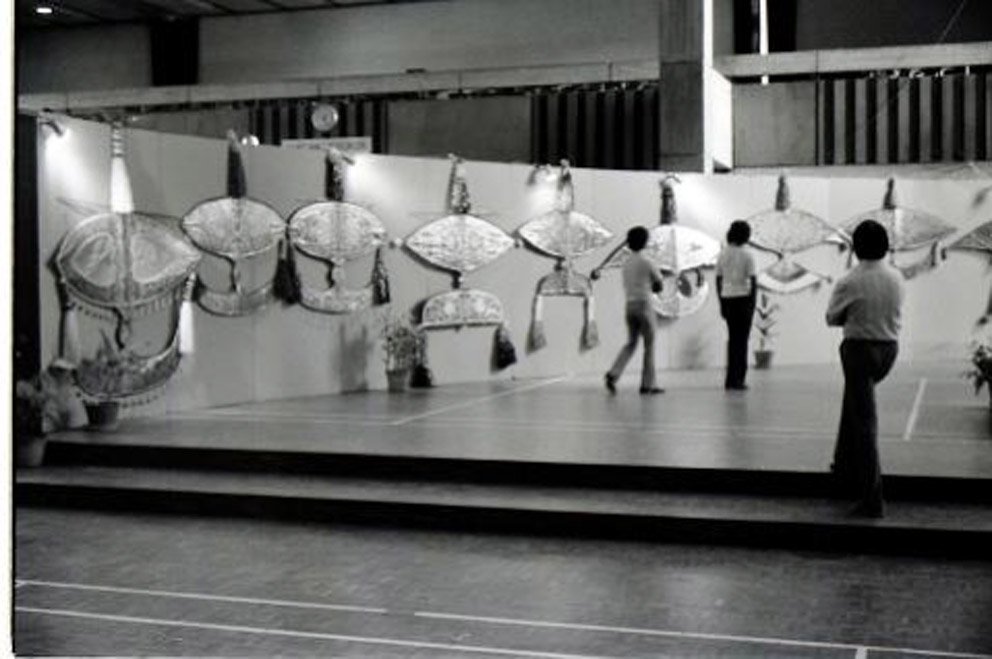
The first figure is Syed Ahmad Jamal, an artist who in 1979 curated an exhibition titled Rupa dan Jiwa (“Form and Soul”), at the University of Malaya in Kuala Lumpur (figs. 4.1 & 4.1). According to T.K. Sabapathy: “It was to be an attempt at constructing a tradition—the authentic Malay tradition in visual form. Artifacts from Malay culture were presented as objects for aesthetic contemplation; here was a rich, culturally and emotionally charged, reservoir of resources.”[24] Ahmad Mashadi walks us through the contexts of the exhibition. First is the belief of Ungku Aziz, then Vice Chancellor of the University of Malaya, in “the indelible qualities of the Malay design and creation […] the uniqueness of the Malay form.”[25] Malay visual form was thought to be signified by “584 objects consisting of weapons, textiles, earthenware, silver ornaments, and implements.”[26] The second context is “the rise of global Islam in the 1970s—highlighted by the 1973 oil crisis and the 1979 Iranian Revolution” that “prompted newer interests in Islamic art and Muslim cultures.”[27] The undercurrent of these contexts would be the 1971 National Cultural Policy that declared Malay and indigenous culture as primordial and yet interacting with the outside world; and that Islam was central in the national culture.
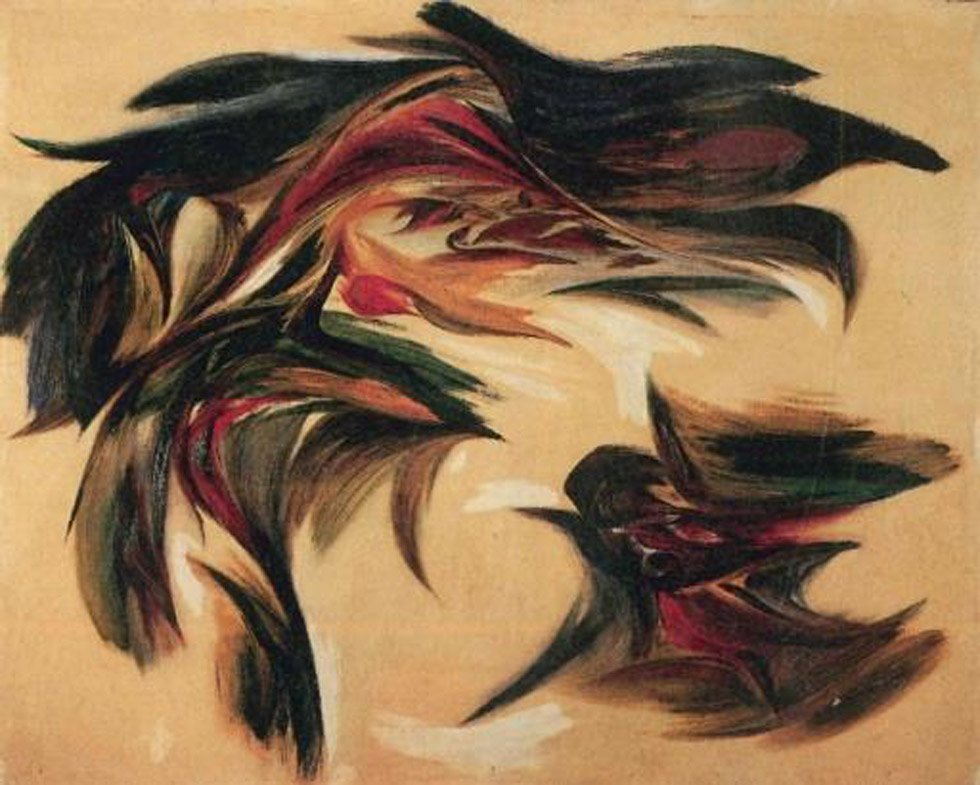
Earlier in 1985, he worked with Empower with his partner Chantawipa on the human rights of sex workers and in 1988 formed the Tap Root Society in Chiang Mai. In 1998, Apisuk set up Asiatopia, a performance art festival that has been instrumental in creating a network of practitioners in the field in the region (fig. 6).
What the practice of Apisuk demonstrates is the impulse of the artist-curator to heighten the relationality of the public of art by widening the entry points of possible interest and participation. One way to do this is to restore the ecology of creative practice through an expansive field of disciplines. Apisuk endeavored to convene different disciplines in one space and made porous the artificial boundaries of artistic categories. A central dynamic in Apisuk’s program was extensity and an experiment with what can be intuited as civil society or the public sphere by way of the copious term “movement,” either through non-government organizations or artist collectives.
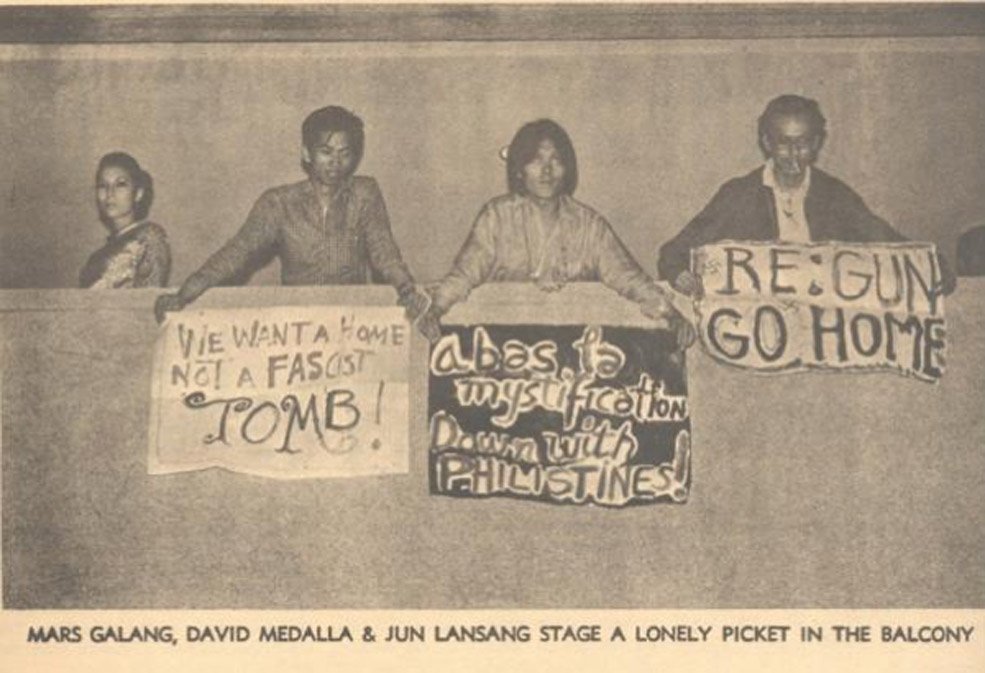
The last figure of the presentation is meant to follow through Raymundo Albano’s work at the Cultural Center. When the Center opened in 1969, David Medalla staged a lightning protest within striking distance of Ferdinand and Imelda Marcos and their guests then Governor Ronald Reagan and his wife Nancy. He unfurled the banner, “A bas la mystification, Down with Philistines” (fig. 7). The first line is instructive to the extent that it centralizes the construction of culture, the modes by which it naturalizes a way of life. To resist mystification is to deconstruct the mystification of the cultural authority that represents the social person or to fix the person in the uniqueness of heritage that is then assimilated into a nation-state identity and a global economy of enrichment. I bring in Medalla primarily because I want to generate tension between the institution and the subjectivity of the agents who mediate it. Medalla accomplishes this task exceptionally well because aside from inciting the necessary frisson to expose the contingency of the institution, he reconstructs the public sphere through his own practice of art-world bricolage. As a maker of relations beginning in the mid-Sixties, of which the work “Stitch in Time” (1967) was emblematic, the migrant Medalla was involved in global constellations of collaborations between art and science such as the Centre for Advanced Creative Study that led to the space Signals Gallery in London and the Signals Newsbulletin. Artists from different parts of the world converged in Medalla’s orbit in London through convergences such as Artists for Democracy and The Exploding Galaxy. Finally, Medalla conceived the elusive, improvisational London Biennale that was first held in 2000. Medalla confides that it was during the 2nd Johannesburg Biennial directed by Okwui Enwezor in 1997 that he thought of the London Biennale. According to him: “At Cape Town in 1997, I thought it was time to create a viable and memorable platform for the world’s ‘marginal artists’ […] a biennale that would be open to every artist regardless of age, sex, ethnic origin, and artistic language or style.”[35] In the words of Guy Brett, the London Biennale “carnivalizes” the biennale institution in which “to participate […] was a poetic rather than a bureaucratic act.”[36]
The work of Raymundo Albano, Syed Ahmad Jamal, Chumpon Apisuk, and David Medalla forms an arc from the sixties through the nineties in Southeast Asia. This is an arc of both artistic and curatorial practice by interlocutors, assemblagists, cultural workers, and intrepid initiators who sorted out the apprehensions of modernity but were able to do more than merely secure its negation. They were able to overcome the critique and redistributed criticality across what Albano called an “ecumenical situation” in which they recovered the “integrity and intelligence” of the local or the personal, positioning it in relation to that which exceeds it, and in the process achieving depth, density, latitude, edge, and risk as artists, in a text that may have been co-written by Albano, become “inventors, magicians, artificers, seers, thinkers, even clowns in constant search of renewal, discovery, and accomplishment.”[37]
What we might relearn from these Southeast Asian figures is that the idea of learning itself is honed within multiple agencies within the structure. I call this intense co-implication in which the person who assumes curatorial roles and gains curatorial effects refunction, translate, or remediate structural prerogatives. The agency here becomes polytropic, taking on different figurations and is in the process of variable turning. In many ways, this modality of learning is self-teaching. Where in most parts of the region, curatorial or museological education is not fully formalized, many of the most interestingly idiosyncratic curators had been self-taught, a condition that has enabled them to embody the bureaucracy and not oppose it as if it were a burden or an impediment. The nimbleness, agility, or artfulness of this agent reveals a metis. James Scott turns to the word metis, which he translates as practical knowledge that is decisively local and that is related to mutuality derived from the anarchist lexicon. He concludes that democracy rests on the “assumption that the metis of its citizenry should, in mediated form, continually modify the laws and policies of the land.”[38]
As I began this presentation with the university and the museum, so will I end it with the university museum where I work both as an art historian and a curator. It revisits the exceptional question of Jacques Derrida: “Today, how can we not speak of the university?”[39] Derrida makes an urgent plea for reflection or critique that the university guarantees, something that “must make its way through the very objects we work with, shaping them as it goes, along with our norms, procedures, and aims.”[40] While it needs to be intimate with the society it performs, the university can only aspire to this intimacy if it offers the chance “for dissociation.”[41] As Derrida puts it: “Keep the memory and keep the chance.”[42] The university, therefore, may be described as being all over, timely and untimely, an ubiquitist, or a professor at-large in Derrida’s grammar, an agency that is embedded and emergent. The curator Clementine Deliss proposes the notion of a museum-university, invoking Joseph Beuys who states: “I want to turn museums into universities that have a department for objects... The museum could offer the first model for an ongoing (or permanent) conference on cultural issues.”[43] This permanent or ongoing conference is crucial in carving out practical intelligence and urgency.
The museum-university or the classroom-museum or the museum-laboratory should inform the relearning procedure in Southeast Asia, instilling among agents a highly engaged intellectual position and a curatorial instinct that eludes the easy capture of either liberal affirmation or critical negation. We had felt this dynamic in the alternative and artist-initiated spaces in the region beginning in the late nineties. And we are currently sensing in Southeast Asia a strongly motivated generation of practitioners who have explored the time and space of the collective, the residency, the archive, and the discourse platform as vehicles of relearning.
I end this presentation by coming back to Jose Rizal’s “The Class in Physics” in which a derisive friar-professor unravels the lesson of the day by probing his students on the classification of mirrors as being strictly either of metal or of glass. He asks: If a particular surface like wood or marble were to acquire a certain sheen or polish, would it be considered a mirror? Or if mercury were to be scraped off the back of the mirror and replaced with another substance, might the mirror still exist? The students are understandably confounded, even made more so when the teacher tosses into the discussion a specific kind of wood, the kamagong, or a specific kind of substitute, the bibingka or rice cake. I think Rizal here allegorizes the teacher’s painful technique of diminishing colonial subjects by transposing them into things that cannot fit into categories and therefore cannot be represented through the colonial optic. In other words, they cannot be mirrors and represent themselves, because they are impenetrable like hard wood and glutinous or viscous like rice cake. But the students reinscribe the materiality and mediality of the racialized hard wood and rice cake in the current ecology and the post-colonial future. This compellingly comes through when one of the students offers something totally unknown or unknowable. According to him: “The mirror of kamagong (the hard wood) is among the mirrors of wood.” With this utterance of both impossible langue and parole, genus and species, that overturns the inviolable taxonomy, the nature of the historical intervenes in the production of a different world; and the metaphysics of the teacher dissolves in the physics of the student, in his ability to take physics to its word as an experimental science of how the world behaves relationally from force to force. Surely, this episode in the classroom-museum touches on the difficult deeds of sensing, representing, speaking on behalf of others, comparing, recognizing, and so on. Jose Rizal saw the laboratory in the university as testifying to the “altura del siglo,” or peak of the century, translated into Tagalog by Patricio Mariano as “kapantay ng mga kasalukuyan,” or “equal with contemporaries,” a “parity among equals,” a “co-presence” of present-day people.[44] Like the much-maligned students of the curate-curator and the inspiring personas of Albano, Jamal, Apisuk, and Medalla and their mutating, calibrating, incremental, wide-ranging, sociable, kinetic, and provocative practice, we have to take risks when we decide to return the gaze and become co-present and impertinent, when we relearn the order of things and become persons who order things differently. Only by doing so that we will be able to take hold of the time to unlearn and finally let go, or unlearn, the time itself of the modern, its art, and its museum. Distracted from that time, we will find another physics and another class, another cosmos of learning, nothing less than another nature of how we play out our work.
Patrick D. Flores is Professor of Art Studies at the Department of Art Studies at the University of the Philippines, which he chaired from 1997 to 2003, and Curator of the Vargas Museum in Manila. He was one of the curators of Under Construction: New Dimensions in Asian Art in 2000 and the Gwangju Biennale (Position Papers) in 2008. He was a Visiting Fellow at the National Gallery of Art in Washington, D.C. in 1999 and an Asian Public Intellectuals Fellow in 2004. Among his publications are Painting History: Revisions in Philippine Colonial Art (1999); Remarkable Collection: Art, History, and the National Museum (2006); and Past Peripheral: Curation in Southeast Asia (2008). He was a grantee of the Asian Cultural Council (2010) and a member of the Advisory Board of the exhibition The Global Contemporary: Art Worlds After 1989 (2011) organized by the Center for Art and Media in Karlsruhe and member of the Guggenheim Museum’s Asian Art Council (2011 and 2014). He co-edited the Southeast Asian issue with Joan Kee for Third Text (2011). He convened in 2013 on behalf of the Clark Institute and the Department of Art Studies of the University of the Philippines the conference “Histories of Art History in Southeast Asia” in Manila. He was a Guest Scholar of the Getty Research Institute in Los Angeles in 2014. He curated an exhibition of contemporary art from Southeast Asia and Southeast Europe titled South by Southeast and the Philippine Pavilion at the Venice Biennale in 2015. He was the Artistic Director of Singapore Biennale 2019.
Notes
[1] Amanda Heng, Artist’s Statement, 2019.
[2] Elizabeth Povinelli, Geontologies: A Requiem to Late Liberalism (Durham: Duke University Process, 2016), 101.
[3] Ranajit Guha, The Small Voice of History (Delhi: Permanent Black, 2002), 350.
[4] Jose Rizal, El Filibusterismo (The Reign of Greed), trans. Charles Derbyshire (Manila: Philippine Education Company, 1912), 115.
[5] See Lihong Liu, “Vitreous Views: Materiality and Mediality of Glass in Qing through a Transcultural Prism,” Getty Research Journal, no. 8 (2016): 17-38.
[6] Ibid., 30.
[7] Luc Boltanski and Arnaud Esquerre, “Enrichment, Profit, and Critique: A Rejoinder to Nancy Fraser,” New Left Review 106 (July-August 2017): 69.
[8] Ibid.
[9] Fidel Villarröel, O.P., A History of the University of Santo Tomas: Four Centuries of Higher Education in the Philippines (1611-2011) Vols. I-II (Manila: University of Santo Tomas Publishing House, 2012), 114.
[10] Rizal, El Filibusterismo.
[11] Quoted in John Schumacher, S.J., “The Philippine Higher Education and the Origins of Nationalism,” Philippine Studies 23, no. 1-2 (1975): 57.
[12] Michel Foucault, The Birth of Clinic: An Archeology of Medical Perception, trans. A.M. Sheridan (London: Routledge, 2003), 89.
[13] Claude Roucher-Deratte, Leçons sur l’art d’observer (Paris: 1807), 87-99. Quoted in Foucault, ibid., 121.
[14] Raymundo Albano, “A Decade of Developmental Art,” Exh. Cat. (Manila: Cultural Center of the Philippines, 1979), n.p.
[15] Ibid.
[16] Raymundo Albano, “Developmental Art of the Philippines,” Philippine Art Supplement 2, no. 4 (July to August 1981): 15.
[17] Imelda Marcos, “Sanctuary of the Filipino Soul,” in The Compassionate Society and Other Selected Speeches¸(Manila: National Media Production Centre: 1977), 18-19. This speech was delivered at the formal dedication of the Cultural Center of the Philippines on September 10, 1969.
[18] Arturo Luz, “Multi-purpose building for housing the arts and the role of the cultural center,” Archipelago VII 2 (February 1980/A-64): 14.
[19] Ibid.
[20] Albano, “Developmental Art of the Philippines,” 15.
[21] Devi De Veyra, “Leandro Locsin’s Brutal Opera,” Rogue, October 2015.
[22] Albano, “Developmental Art of the Philippines,” 15.
[23] Ibid.
[24] T. K. Sabapathy, “Vision and Idea: Afterthoughts,” in Vision and Idea: ReLooking Malaysian Modern Art, ed. T. K. Sabapathy (Kuala Lumpur: National Art Gallery, 1994), 108.
[25] Ahmad Mashadi, untitled paper presented in Panel 5 “Gaps in Southeast Asian Art History: Methodologies and Pedagogies” of the colloquium “Histories of Art History in South East Asia,” Manila, Philippines, March 21-23, 2013.
[26] Ibid.
[27] Ibid.
[28] Syed Ahmad Jamal, Seni Lukis Malaysia – 25 Tahun (Kuala Lumpur: Balai Seni Lukis Negara, 1982), n.p.
[29] Ibid.
[30] Stanley J. O’Connor, “Art Critics, Connoisseurs, and Collectors in the Southeast Asian Rain Forest: A Study in Cross-Cultural Art Theory,” Journal of Southeast Asian Studies 14, no. 2 (September 1983): 408.
[31] Thai name of Italian-born sculptor Corrado Feroci.
[32] Vichoke Mukdamanee, Mixed Media and Installation in Thailand, trans. Chantima Ongsuragz (Bangkok: Art Centre, Silapakorn University, 2002), 80.
[33] Ibid.
[34] Chumpon Apisuk, “Unpredictable Repercussions,” Artlink 13, no. 3 & 4 (December 1993): 24.
[35] Quoted in Camille Anne Arcilla, “London Biennale to be held in PHL,” Business World, September 7, 2016.
[36] Guy Brett, “David Medalla: On a General Attitude and Two Works in Particular,” in Carnival of Perception: Selected Writings on Art (London: Institute of International Visual Arts, 2004), 77.
[37] Unpublished manuscript attributed to Johnny Manahan in the Johnny Manahan Archives located at the Resource Centre of the National Gallery Singapore.
[38] James Scott, Seeing Like a State: How Certain Schemes to Improve the Human Condition Have Failed (New Haven: Yale University Press, 1998), 357.
[39] Jacques Derrida, “The Principle of Reason: The University in the Eye of its Pupils” Diacritics 13, no. 4 (Autumn 1983): 3.
[40] Ibid.
[41] Ibid., 19.
[42] Ibid., 20.
[43] Joseph Beuys quoted in Clémentine Deliss, “Collecting Life’s Unknowns,” essay presented at the seminar “Decolonising the Museum,” curated by Paul B. Preciado, at MACBA, Barcelona, in November 2014 L’Internationale Online, accessed May 21, 2018, http://www.internationaleonline.org/research/decolonising_practices/27_collecting_lifes_unknowns.
[44] Jose Rizal, Ang Filibusterismo (El Filibusterismo), trans. Patricio Mariano (Manila: I.R. Morales, 1911), 114.
Singapore Biennale, 2019
Artistic Director: Patrick D. Flores
